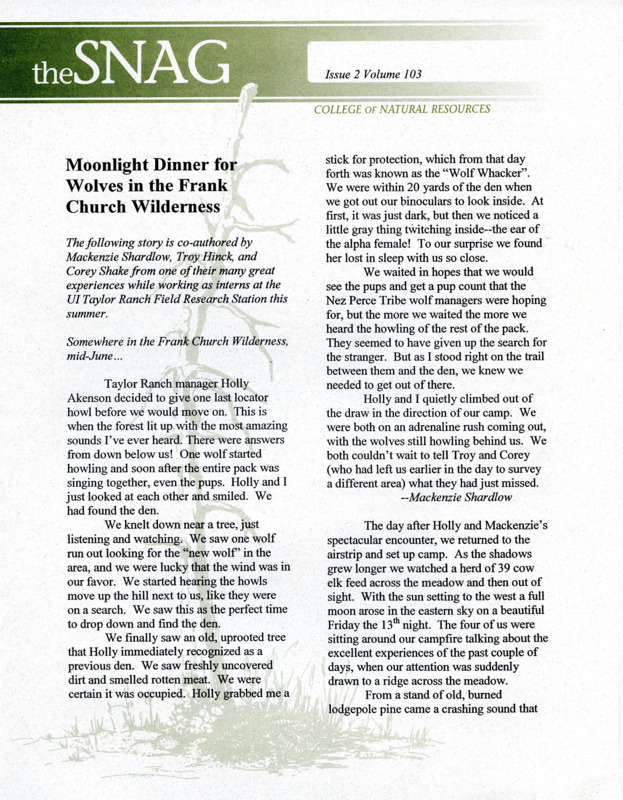Designing the Wolves
Upon second inspection, I decided that the collage wasn’t too bad, but definitely not what I was going for. Here, I came to another crossroad: keep the timeline, or ditch it? “I’ll think about it,” I decided, “but what to do about the wolves?”
This was another element that confounded me, because I wasn’t sure which wolves to include and when, how to schematize them, or how to design them. That’s when I discovered a gold nugget of information within the University of Idaho’s Special Collections & Archives.
I came across two primary sources: a 2003 SNAG article about wolves in the Frank Church River of No Return Wilderness, and a 1995 Frankly Speaking article, “Wolves Finding Their Niche in the River of No Return Wilderness.”
The second source was about the first wolves release in Idaho, including their names, physical descriptions and locations! I felt like whatever divine mechanism running the universe smiled upon me that day–I finally had my designs! Furthermore, I had stories, such as a gray female named B-13, who was shot 10 days after release when she was found feeding on a calf carcass. Or MoonStar Shadow and Lebrai, who journeyed to the Idaho-Montana Border (Brannon 1–2). These stories, among others, helped me to better visualize wolf reintroduction.
Finally, I began to illustrate the wolves based on their descriptions. I was returning to my comfort zone–illustration–which made this part of the process the most meditative. As I drew them and mapped their locations on the collage, I imagined the wolves’ journeys and their relationships with each other. This imagination helped me to design them (wolves), their release sites (schematized by cages), and their navigation through the landscape (pawprints from the release sites).
After gluing them down and adding a few more details, I stepped back once again and felt relieved. Idaho looked good. The wolves looked great!
But as my eyes traveled to Montana, my heart sank again. As I looked at the timeline again, I saw how it overtook the piece. What’s more, the wolves made the timeline obsolete: ultimately, I was telling the story of the first wolves reintroduced, while the remaining history was irrelevant to that story. Coming back to that crossroad of stay or go, I found my answer: it had to go.

